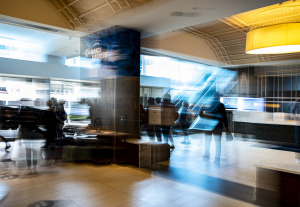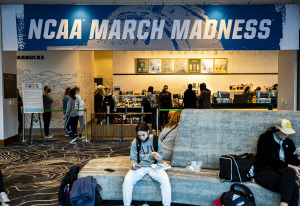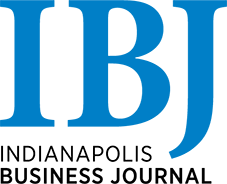Indiana reports six-month low in daily COVID-19 cases
The state said more than 837,000 Hoosiers had been fully vaccinated against COVID-19 as of Monday. More than 1.27 million had received the first dose of a two-dose vaccination.

The state said more than 837,000 Hoosiers had been fully vaccinated against COVID-19 as of Monday. More than 1.27 million had received the first dose of a two-dose vaccination.

Teams must undergo a quarantine and testing period when they arrive in Indianapolis—and no one from the schools was allowed to make the trip without seven consecutive days of negative tests.
Sunday marked the fourth straight day that TSA saw more than 1 million people pass through its checkpoints. That has not happened since March 2020, when travel was collapsing at the start of the pandemic.

Forty-six teams had arrived in Indianapolis for the NCAA men’s basketball tournament by late Sunday, and each was given a COVID-19 test upon arrival.
With nearly 30 million U.S. cases of COVID-19 and 119 million worldwide, the impact could be staggering, even if only a small fraction of patients develop long-term problems.
The state said more than 830,000 Hoosiers had been fully vaccinated against COVID-19 as of Sunday. More than 1.27 million had received the first dose of a two-dose vaccination.
The state said more than 816,000 Hoosiers had been fully vaccinated against COVID-19 as of Saturday at 5 a.m. More than 1.25 million had received the first dose of a vaccination.
The cancellations create uncertainty about the programs’ ability to participate in the NCAA Men’s Basketball Tournament in Indiana, which begins March 18.
Statewide hospitalizations due to COVID-19 increased from 598 on Wednesday to 608 on Thursday.
More than 600 artists, musicians, dancers and other creative types are expected to take part in Swish, an arts and cultural festival that will take over sidewalks and outdoor cultural spaces in downtown Indianapolis starting Saturday.
President Joe Biden pledged in his first prime-time address Thursday night to make all adults eligible for vaccines by May 1 and raised the possibility of beginning to “mark our independence from this virus” by the Fourth of July.
The president signed the aid package into law Thursday without a comprehensive plan in place to distribute all of the funds, which will be a core focus of the administration in coming weeks.
The S&P 500, the Dow Jones industrial average and the Russell 2000 measure of small-company stocks all closed at record levels on Thursday.
Since most state budgets are not in the tailspins that many feared last spring, states can use their share of the money to go way beyond balancing the books and dealing with the direct costs of the coronavirus pandemic.
President Biden’s challenge Thursday night will be to honor the sacrifices made by Americans over the last year while encouraging them to remain vigilant despite “virus fatigue” and growing impatience to resume normal activities.
The Indiana State Department of Health on Thursday reported 922 new cases of COVID-19, the 13th time in the past 14 days in which daily cases have been below 1,000.
Counting supplemental federal unemployment programs that were established to soften the economic damage from the virus, an estimated 20.1 million people are collecting some form of jobless aid.
The government guidance comes as coronavirus cases and deaths among nursing home residents have plummeted in recent weeks at the same time that vaccination accelerated.
The funding will allow elementary schools, high schools and libraries to purchase Wi-Fi hotspots, modems and routers for students, and also fund the Internet service that those devices use.
The pandemic relief package approved by Congress on Wednesday calls for grants equal to the amount of restaurants’ revenue losses, up to a maximum of $10 million per company and $5 million per location.
